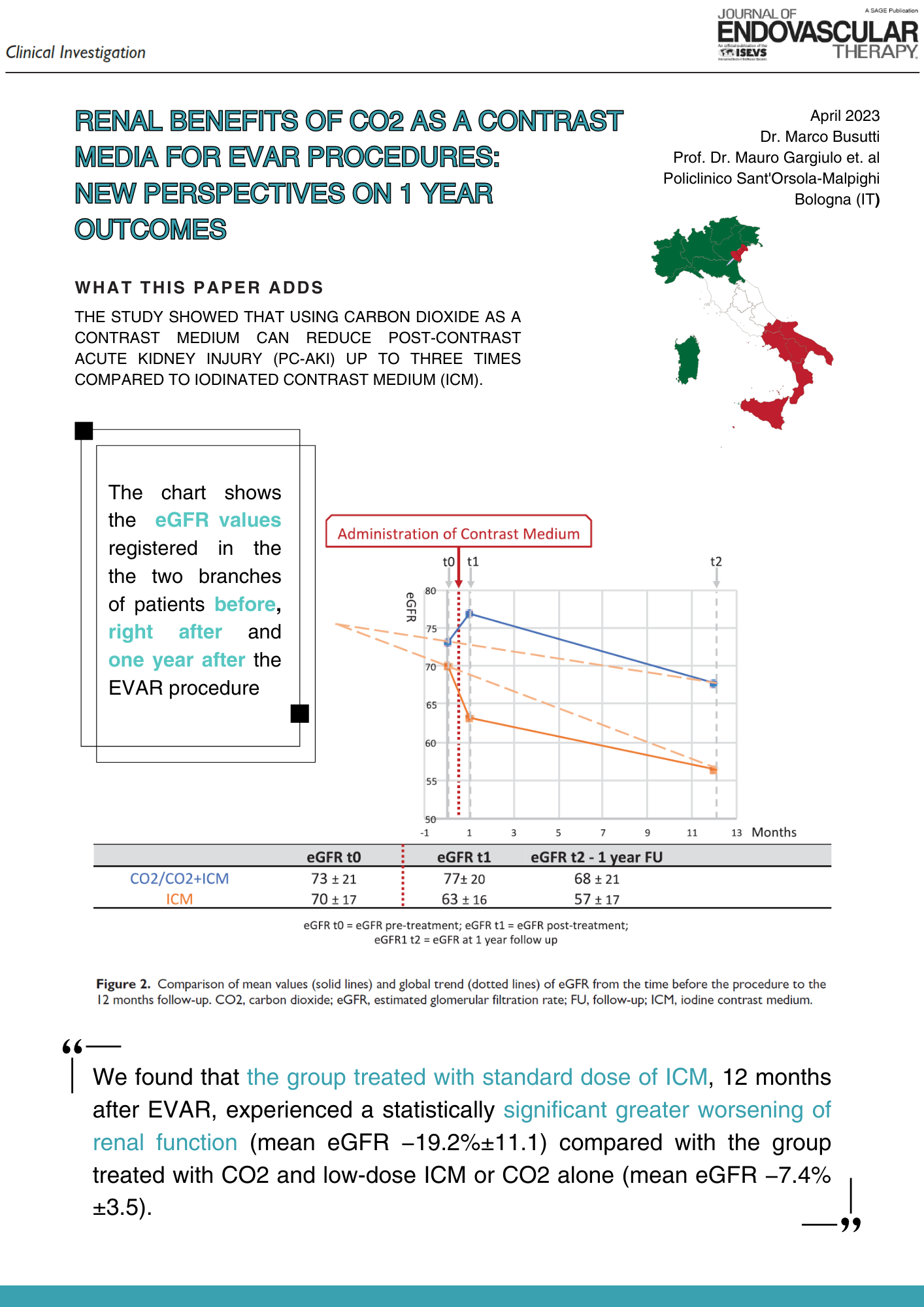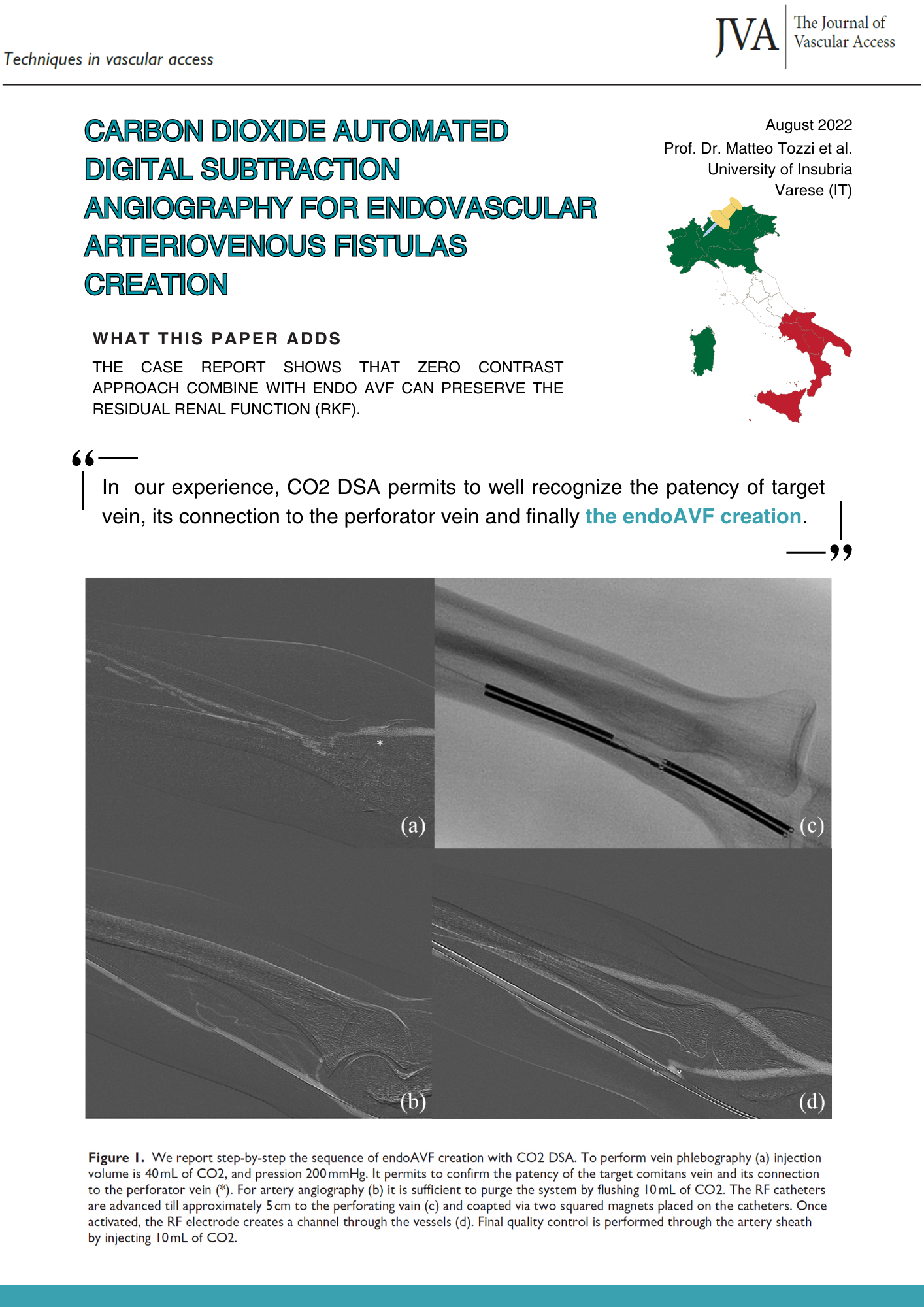Paper
1-year evolution of CO2 imaging in lower limb angioplasty
INTRODUCTION: Manual or semi-manual CO2 injection systems do not allow for repeatability of the methodology and the result is highly operator dependent, limiting the use of CO2 angiography to special cases. Recently, an automatic CO2 injector has been developed that allows controlled (volume and pressure) injections of CO2 in a completely safe and reproducible way. The availability of a safe and biocompatible contrast medium preserves renal function in patients with renal failure and in those undergoing repetitive diagnostic or interventional procedures. Contrast-induced nephropathy (CIN) is the third most common cause of hospital-acquired kidney injury, and has been shown to significantly affect the budgets of hospitals where endovascular procedures are performed on a daily basis. Therefore, there is a need to assess the clinical reliability for the benefit of the patient and the economic impact on hospital costs of ACDA (automated carbon dioxide angiography). In this study, a one-year preliminary experience was reported evaluating the clinical and economic impact of the use of ACDA in daily clinical practice.
METHODS: In 1 year (July 2020 to June 2021), 785 lower limb procedures were performed at the Rhéna Clinic (Strasbourg, France) and 564 out of 785 procedures were performed using CO2 as the primary contrast agent, with an average of 47 ± 8 procedures per month.
RESULTS: The quality of the CO2 image in the diagnostic and interventional phases was found to be satisfactory. More than 72% of the procedures were performed with less than 15 cc of ICM injection. The duration of the procedure was not affected by the type of contrast medium used. No adverse events or complications resulting from the use of CO2 were reported
Contact us for more information
.png?width=2000&height=1429&name=Progetto%20senza%20titolo%20(1).png)


